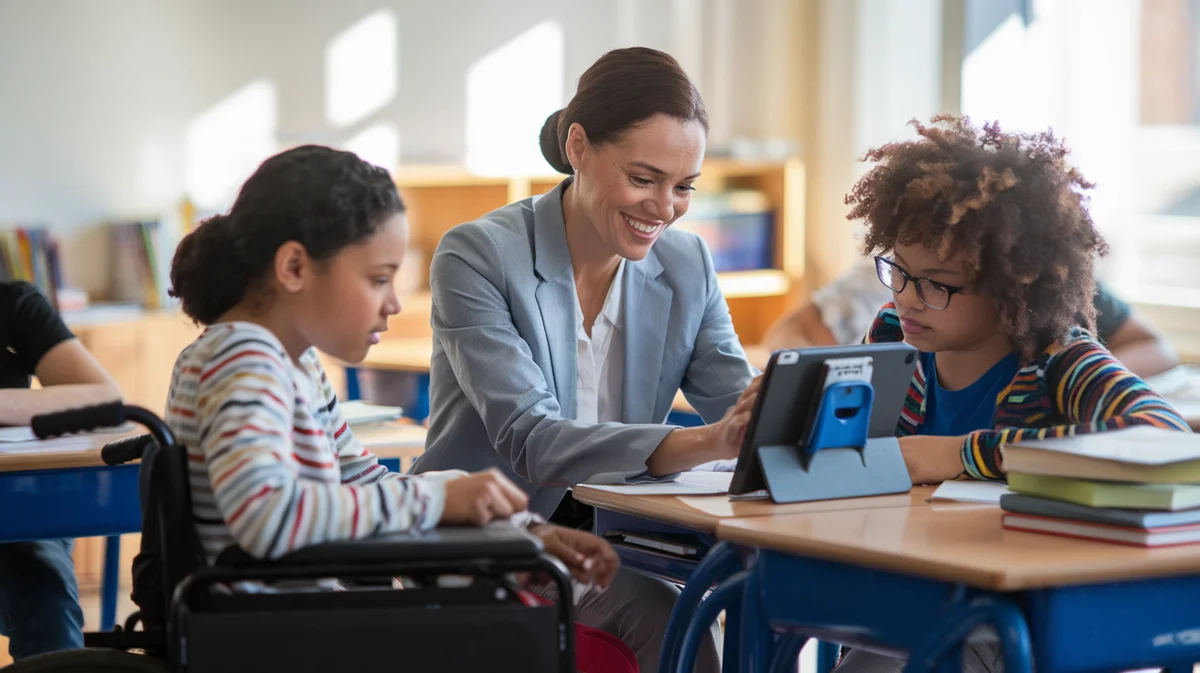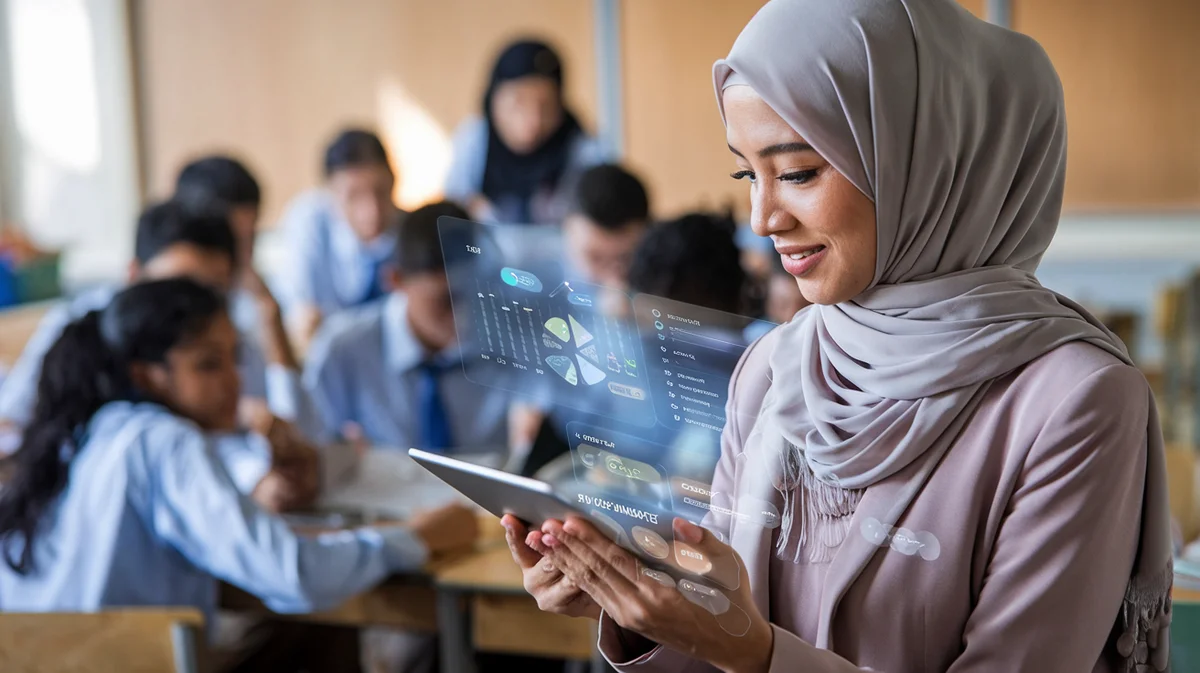Cultural Attitudes in Inclusive Education Awareness


wp:paragraph
Inclusive education awareness is transforming learning landscapes worldwide, but the journey is shaped by deep-rooted cultural attitudes, evolving policies, and innovative strategies. At UNOWA, we believe that every learner deserves access to quality, future-ready education — regardless of background or ability. Drawing on over 15 years of experience and insights from global reform projects, we explore how cultural perspectives influence inclusive education across the EU, MENA, and CIS regions, and share proven strategies for large-scale, sustainable impact.
/wp:paragraph
wp:heading {"level":2}
The Global Shift Toward Inclusive Education
/wp:heading
wp:paragraph
Inclusive education is grounded in the principle that all students — regardless of ability, ethnicity, language, or background — should learn together in mainstream settings. This vision is championed by international frameworks such as the United Nations Sustainable Development Goal 4 (SDG 4), UNESCO, and the World Bank, all of which recognize inclusive education as a fundamental right and a catalyst for social cohesion and economic growth (UNESCO, World Bank).
/wp:paragraph
wp:paragraph
Key progress highlights:
/wp:paragraph
wp:list
- In Central and Eastern Europe, the Caucasus, and Central Asia, out-of-school rates have halved over the past two decades.
- The percentage of children with disabilities in special schools dropped from 78% in 2005/06 to 53% in 2015/16.
- EU countries like Bulgaria, Malta, Poland, Latvia, Lithuania, and Estonia have robust frameworks for annual data collection and teacher training, supporting ongoing reform.
/wp:list
wp:heading {"level":2}
Cultural Attitudes: The Heart of Inclusive Education Awareness
/wp:heading
wp:paragraph
While policy and infrastructure are critical, cultural attitudes often determine the pace and depth of inclusive education reform. In many regions, traditional views about disability, difference, and diversity still shape educational practices and community expectations.
/wp:paragraph
wp:heading {"level":3}
Broadening the Definition of Inclusion
/wp:heading
wp:paragraph
Countries across the EU, MENA, and CIS are expanding their understanding of inclusion to embrace not only students with disabilities but also those from marginalized ethnic, religious, and linguistic backgrounds, as well as LGBTIQ+ students and migrants. This shift is vital for building truly inclusive, equitable systems.
/wp:paragraph
wp:quote
“Countries have been moving away from the medical model. The percentage of children with disabilities in special schools fell from 78% in 2005/06 to 53% in 2015/16.” — International Education Expert
/wp:quote
wp:heading {"level":3}
Persistent Barriers
/wp:heading
wp:paragraph
Despite progress, challenges remain:
/wp:paragraph
wp:list
- Social stigma: In some communities, particularly rural or less-developed areas, traditional beliefs about disability and difference persist.
- Segregation: One in three students with special needs in Central and Eastern Europe is still placed in special schools.
- Awareness gaps: Parents and educators may lack understanding of inclusive education’s benefits, especially in MENA and CIS countries.
/wp:list
wp:heading {"level":2}
Regional Perspectives: Progress and Challenges
/wp:heading
wp:heading {"level":3}
European Union (Bulgaria, Malta, Poland, Latvia, Lithuania, Estonia)
/wp:heading
wp:list
- Strengths: Strong policy frameworks, annual data collection, and targeted teacher training.
- Challenges: Rural-urban disparities and persistent segregation in some areas.
- Innovations: The launch of MOOCs and professional development programs for rural educators, sharing best practices and supporting inclusive teaching (European Agency for Special Needs and Inclusive Education).
/wp:list
wp:heading {"level":3}
MENA (Saudi Arabia, UAE, Qatar, Oman)
/wp:heading
wp:list
- Strengths: Growing investment in inclusive education and policy reforms.
- Challenges: Cultural attitudes and implementation gaps can slow progress.
- Innovations: National inclusion strategies and awareness campaigns are raising the profile of inclusive education awareness.
/wp:list
wp:heading {"level":3}
CIS (Kazakhstan, Uzbekistan, Armenia, Moldova, Azerbaijan, Kyrgyzstan, Georgia)
/wp:heading
wp:list
- Strengths: Adoption of rights-based definitions of inclusion and reduced segregation.
- Challenges: Legacy of the medical model and resource limitations.
- Innovations: National strategies and flexible support systems, with countries like Armenia, Moldova, and Georgia leading reforms.
/wp:list
wp:heading {"level":2}
Government Policies and International Guidelines
/wp:heading
wp:paragraph
Most EU countries have enacted national policies promoting diversity and inclusion, with targeted initiatives for disadvantaged groups. In the CIS, nations are reforming systems to reduce segregation, while MENA countries are investing in new strategies, though cultural attitudes can affect implementation.
/wp:paragraph
wp:paragraph
UNESCO and the World Bank advocate for inclusive education as a driver of social and economic development, emphasizing the need for:
/wp:paragraph
wp:list
- Flexible, individualized support for students.
- Investment in teacher training and professional development.
- Community engagement and awareness campaigns.
/wp:list
wp:heading {"level":2}
Best Practices for Building Inclusive Education Awareness
/wp:heading
wp:paragraph
At UNOWA, our experience delivering comprehensive educational systems — including our MIKKO inclusive education platform — has shown that successful reform requires a multi-faceted approach:
/wp:paragraph
wp:heading {"level":3}
1. Empowering Educators
/wp:heading
wp:paragraph
Investing in ongoing professional development empowers teachers to adopt inclusive practices, adapt curricula, and support diverse learners. Our training programs are designed to equip educators with the tools and confidence to lead inclusive classrooms.
/wp:paragraph
wp:heading {"level":3}
2. Community Engagement
/wp:heading
wp:paragraph
Raising inclusive education awareness among parents, students, and local leaders is essential. Awareness campaigns, workshops, and open dialogues help shift mindsets and reduce stigma.
/wp:paragraph
wp:heading {"level":3}
3. Flexible Support Systems
/wp:heading
wp:paragraph
Providing access to counselling, mentoring, and specialist support ensures that all students receive the help they need. In Central and Eastern Europe, 23 out of 30 education systems now offer counselling and mentoring, and 21 provide specialist support.
/wp:paragraph
wp:heading {"level":3}
4. Data-Driven Decision Making
/wp:heading
wp:paragraph
Collecting and analyzing data on student needs, outcomes, and participation helps policymakers and educators tailor interventions and measure progress. The European Agency Statistics on Inclusive Education (EASIE) is a model for effective monitoring.
/wp:paragraph
wp:heading {"level":3}
5. Collaboration and Partnerships
/wp:heading
wp:paragraph
Collaboration between ministries, NGOs, and international organizations is key to scaling up successful reforms and sharing best practices across borders.
/wp:paragraph
wp:heading {"level":2}
Recent Developments: Innovation in Action
/wp:heading
wp:list
- In 2025, the EU launched a MOOC for small and rural schools, disseminating best practices in inclusive education and supporting educators in less-resourced areas.
- Ongoing policy reviews and new initiatives across Europe and the CIS are further reducing segregation and improving access to quality, inclusive education.
/wp:list
wp:heading {"level":2}
Expert Insights
/wp:heading
wp:quote
“The shift to inclusion is far from complete. One in three students with special needs in Central and Eastern Europe is still placed in special schools.” — International Education Policy Analyst
/wp:quote
wp:quote
“Investing in teacher training and involving communities in awareness campaigns are critical for sustainable, large-scale impact.” — Inclusive Education Specialist
/wp:quote
wp:heading {"level":2}
Regional Overview Table
/wp:heading
Region/Country Group
Progress & Strengths
Key Challenges
Notable Initiatives
EU (Bulgaria, Malta, Poland, Latvia, Lithuania, Estonia)
Strong policy frameworks, annual data collection, teacher training
Rural disparities, persistent segregation
MOOCs for rural educators, targeted inclusion policies
MENA (Saudi Arabia, UAE, Qatar, Oman)
Growing investment, policy reforms
Cultural attitudes, implementation gaps
National inclusion strategies, awareness campaigns
CIS (Kazakhstan, Uzbekistan, Armenia, Moldova, Azerbaijan, Kyrgyzstan, Georgia)
Rights-based reforms, reduced segregation
Medical-model legacy, resource gaps
National strategies, flexible support systems
wp:heading {"level":2}
FAQ: Cultural Attitudes in Inclusive Education
/wp:heading
wp:paragraph
What is inclusive education awareness? Inclusive education awareness refers to understanding and promoting the value of educating all students together, regardless of their abilities or backgrounds, and recognizing the benefits for individuals and society.
/wp:paragraph
wp:paragraph
How do cultural attitudes affect inclusive education? Cultural beliefs about disability, diversity, and difference can either support or hinder the adoption of inclusive practices. Positive attitudes foster acceptance and participation, while stigma and traditional views can create barriers.
/wp:paragraph
wp:paragraph
What are the main challenges to inclusive education in the EU, MENA, and CIS regions? Challenges include persistent segregation, limited teacher training, resource gaps, and social stigma — especially in rural or less-developed areas.
/wp:paragraph
wp:paragraph
How can schools and policymakers improve inclusive education awareness? By investing in teacher training, engaging communities, providing flexible support, and collaborating with international partners, schools and policymakers can drive meaningful change.
/wp:paragraph
wp:paragraph
Where can I learn more about inclusive education and best practices? Explore resources from UNESCO, World Bank, and the European Agency for Special Needs and Inclusive Education. For tailored solutions and expert guidance, visit UNOWA.
/wp:paragraph
wp:paragraph
At UNOWA, we are committed to empowering institutions, educators, and students to create a brighter, more inclusive future. Let’s work together to transform learning experiences and build educational systems that leave no one behind.
/wp:paragraph








